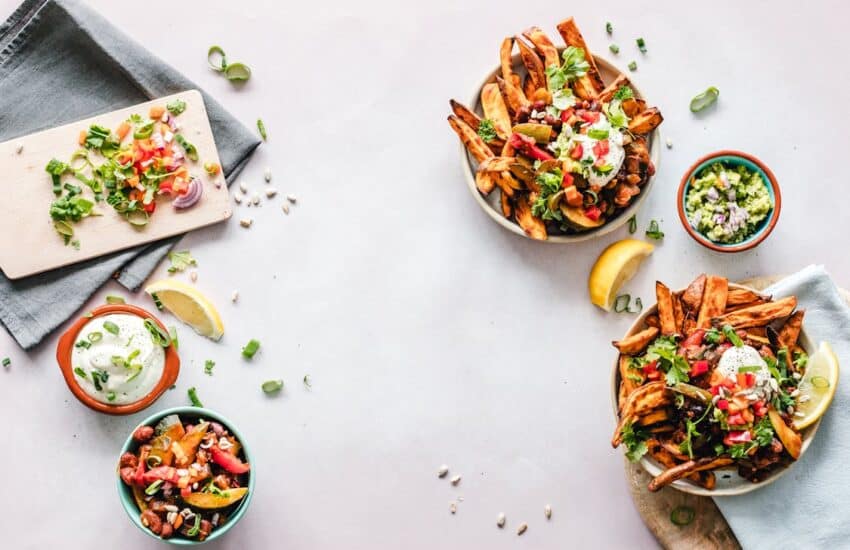The luteal phase—the second half of your menstrual cycle—often brings fatigue, bloating, and mood changes. Strategic nutrition can make a world of difference. By incorporating complex carbs, healthy fats, lean proteins, and key micronutrients, you can support hormone balance, ease PMS symptoms, and feel more in control. Let’s break down what to eat and why it matters.
Understanding the Luteal Phase: What’s Happening in Your Body?
The luteal phase begins after ovulation and ends when your period starts, typically lasting 12–14 days. During this time, hormone levels shift dramatically, especially progesterone, as your body prepares for a potential pregnancy.
🔄 Key Hormonal Changes
| Hormone | Role in Luteal Phase | Effect on Body |
|---|---|---|
| Progesterone | Thickens uterine lining | May cause mood changes, bloating |
| Estrogen | Rises slightly again | Affects breast sensitivity, mood |
| LH & FSH | Decrease post-ovulation | Remain low |
| hCG | Only present if pregnant | Maintains progesterone production |
➡️ Why it matters: These hormonal shifts are responsible for common PMS symptoms—and adjusting your diet can help mitigate their effects.
Common Luteal Phase Symptoms
It’s normal to experience physical and emotional changes during this phase. Severity varies, but symptoms are often referred to as PMS (Premenstrual Syndrome).
Physical Symptoms
-
Bloating
-
Breast tenderness
-
Headaches
-
Acne
-
Constipation or diarrhea
-
Lower back pain
-
Fatigue
🔗 You might also like to read: Happy Mammoth’s Hormone Harmony Review
Emotional/Mental Symptoms
-
Mood swings
-
Irritability
-
Anxiety or sadness
-
Sleep disturbances
-
Cravings
-
Decreased libido
When to seek help: If symptoms are severe or disrupt your daily life, consult a healthcare provider. Conditions like PMDD (Premenstrual Dysphoric Disorder) may require medical attention.
Why Nutrition Matters During the Luteal Phase
Nutritional support during this time isn’t just a wellness trend—it’s a science-backed strategy for better hormonal balance and symptom management.
Benefits of Luteal Phase Nutrition
-
Stabilizes blood sugar and mood
-
Eases bloating and digestive issues
-
Supports energy production
-
Prepares body for potential pregnancy
Let’s explore which nutrients and foods make the biggest difference.
Key Nutrients to Prioritize
| Nutrient | Benefits | Best Food Sources |
|---|---|---|
| Magnesium | Reduces cramping, supports mood | Dark leafy greens, nuts, seeds |
| Vitamin B6 | Boosts mood, reduces irritability | Bananas, chickpeas, poultry |
| Calcium | Eases mood swings and bloating | Leafy greens, dairy, almonds |
| Omega-3s | Anti-inflammatory, mood support | Salmon, walnuts, flaxseed |
| Fiber | Reduces bloating, stabilizes digestion | Whole grains, legumes, veggies |
🔗 You might also like: What Causes Extreme Hunger During Menopause?
Best Foods to Eat During the Luteal Phase
1. Complex Carbohydrates for Steady Energy
These help regulate blood sugar and support serotonin production, reducing mood swings and cravings.
✅ Top Picks:
-
Quinoa – Complete protein, magnesium-rich
-
Sweet Potatoes – High fiber, low glycemic
-
Oats – Slow energy release, rich in B-vitamins
📋 Comparison Table: Complex Carbs
| Food | Benefits | Fiber (per cup) | Glycemic Index |
|---|---|---|---|
| Quinoa | Complete protein, magnesium | 5g | Low |
| Sweet Potatoes | Potassium, vitamin A | 4g | Low |
| Oats | Beta-glucans, iron | 4g | Moderate |
2. Lean Proteins for Hormone Balance
Proteins support tissue repair and hormone production, while helping to control appetite.
✅ Best Sources:
-
Chicken breast
-
Tofu and tempeh
-
Eggs
-
Lentils and chickpeas
🌱 Plant-based?: Legumes and soy products offer excellent protein and micronutrient support.
3. Healthy Fats for Hormonal Health
Essential fats reduce inflammation and support hormone synthesis.
✅ Include:
-
Avocados
-
Olive oil
-
Flaxseeds
-
Walnuts
💡 Tip: Try adding flaxseed to oatmeal or yogurt during this phase for an omega-3 boost.
4. Hydrating & Anti-Bloat Foods
Staying hydrated helps with water retention and digestion.
✅ Eat more:
-
Cucumber
-
Celery
-
Watermelon
-
Lemon water
-
Herbal teas (like dandelion or peppermint)
Luteal Phase Diet & Fertility: Preparing for Pregnancy
Even if you’re not actively trying to conceive, your body is naturally prepping for it. Support this process with:
Fertility-Boosting Nutrients
| Nutrient | Why It Matters | Sources |
|---|---|---|
| Folate | Prevents neural tube defects | Leafy greens, fortified grains |
| Iron | Supports increased blood volume | Lentils, spinach, red meat |
| Vitamin D | Calcium absorption, immunity | Eggs, fatty fish, sunshine |
| Zinc | Cell growth & hormone function | Pumpkin seeds, shellfish |
| Choline | Brain development | Eggs, soy, peanuts |
Who Should Follow a Luteal Phase Diet?
✔️ Great For:
-
Women experiencing moderate to severe PMS
-
Those managing mood disorders or anxiety during their cycle
-
Anyone trying to support fertility naturally
-
Athletes and active women seeking performance consistency
❌ May Not Be Ideal If:
-
You have a hormonal condition requiring a specialized diet (e.g., PCOS, endometriosis)
-
You’re on hormone therapy—consult a healthcare provider
Safety Considerations
-
This guide is not a substitute for medical advice.
-
Supplements and herbal teas should only be taken under professional supervision.
Summary Table: Best Luteal Phase Foods
| Food Group | Examples | Primary Benefit |
|---|---|---|
| Complex Carbs | Quinoa, oats, sweet potato | Steady energy, mood support |
| Lean Protein | Eggs, lentils, tofu | Hormone production |
| Healthy Fats | Avocado, olive oil, nuts | Inflammation & hormone balance |
| Hydrating Foods | Cucumber, tea, watermelon | Reduces bloating |
| Micronutrients | Dark greens, dairy, seeds | PMS symptom relief |
FAQs
Is it really necessary to change your diet during the luteal phase?
Yes. Hormonal shifts affect mood, digestion, and energy. Adapting your nutrition can ease symptoms and support hormonal balance.
What not to eat during the luteal phase?
Avoid:
-
Excess sugar (mood swings)
-
High-sodium foods (bloating)
-
Caffeine (sleep disruption, anxiety)
-
Alcohol (exacerbates PMS symptoms)
Is quinoa good during the luteal phase?
Absolutely. Quinoa is high in magnesium, complete protein, and low-GI—ideal for stable energy and hormone support.
How long is the luteal phase?
Typically 12–14 days. It begins after ovulation and ends when your period starts.
Can food really affect PMS symptoms?
Yes. Studies from NCBI and Healthline show that magnesium, calcium, and vitamin B6 can significantly reduce PMS severity.
Final Takeaway: Nourish to Support, Don’t Suffer
You don’t need to dread the luteal phase. By nourishing your body with whole, nutrient-dense foods, you can transform this time from a struggle to a source of strength. Think of it as a monthly opportunity to tune into your body’s needs and respond with supportive, thoughtful nutrition.
As always, listen to your body and speak with a qualified health provider or dietitian before making any significant dietary changes.

